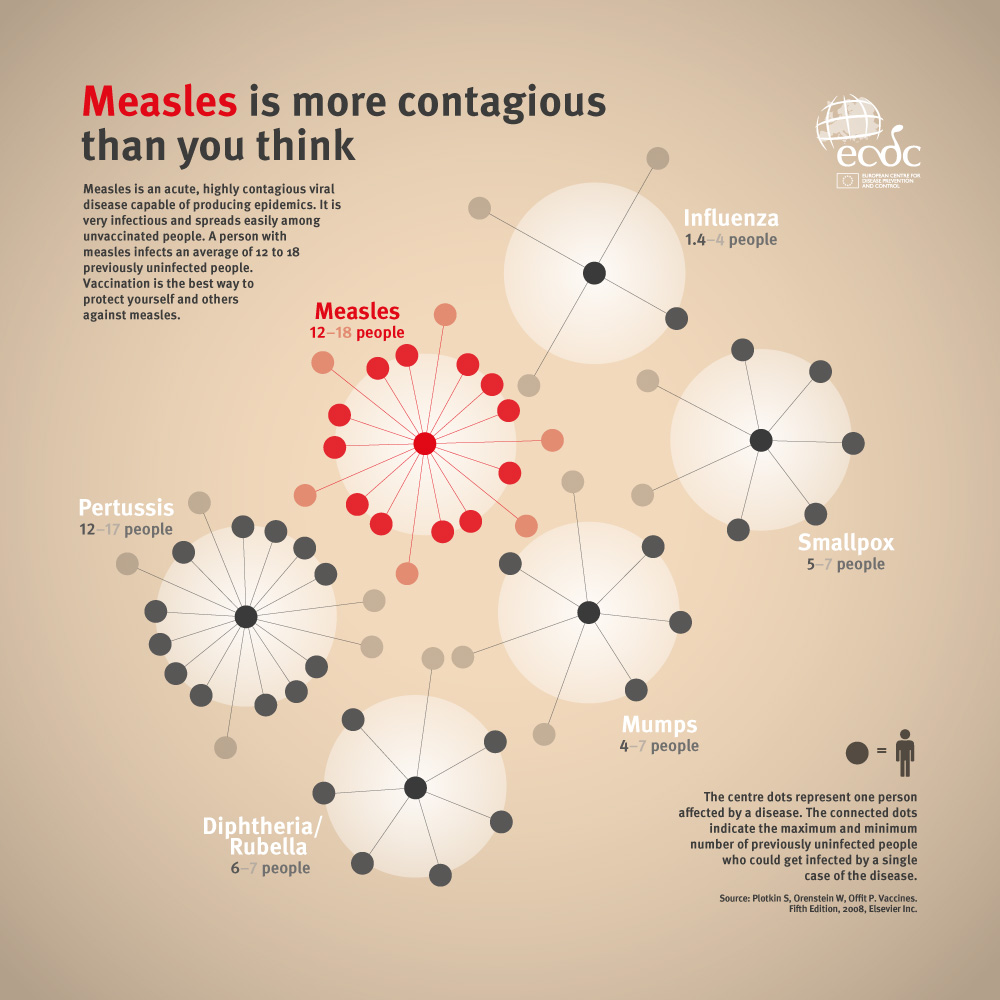Diseases know no borders. As Europe’s measles outbreaks illustrate, viruses can travel with ease from one country to the next. Similarly, an outbreak in Venezuela has spilled over into neighbouring Brazil, and a child from France is the suspected source of measles infections in Costa Rica.

But vaccine hesitancy can travel too. Rumours spread in families and communities, but also through social media and online networks.
Sometimes information moves in surprising ways. The Vaccine Confidence Project has previously traced outbreaks of vaccine refusal across global religious and language communities. False claims about polio vaccination initiatives spread through Muslim networks around the world; a trend for refusing tetanus vaccine moved through Catholic networks from the Philippines to Africa and on to Latin America.
It should not be surprising that internal movements of people in Europe can create new dynamics in vaccine uptake. Two recent studies look at children from Polish families living in Scotland. Their key findings are that uptake of HPV vaccine and flu vaccine in the Polish community is lower than the national average.
Population subgroups
The first study looked at HPV vaccine acceptance in Polish communities within Scotland. It found that during 2014-2017, HPV vaccine uptake among Polish girls aged 12-13 years was 73% – significantly lower than the 89% vaccine uptake in the rest of the population.
‘Preliminary discussions with Polish families suggest that vaccine programme differences, trust in medical/healthcare practitioners, and cultural influences may be important drivers of acceptance,’ the authors of the paper concluded.
The second paper on flu vaccine uptake is even more startling. In the 2016/2017 season, seasonal influenza vaccine uptake among children of Polish immigrants aged 5-12 years was 25%, compared with 71% average uptake among UK-born children. Among other ethnic groups, excluding Polish and white British children, uptake was 60%.
‘These findings demonstrate that significant differences exist in nasal influenza vaccination uptake rates, which have important implications for the trans-national study of vaccine hesitancy,’ according to the authors of the paper.
Tailoring campaigns
Polish people are the largest minority in Scotland. Although they are relative newcomers – many arriving over the past 15 years – they have generally integrated well. However, the studies suggest targeted campaigns may be needed to bring vaccine uptake in line with national averages.
Both investigations were initiated following an observation that vaccination programmes achieve suboptimal coverage in communities with large Polish communities, according to the Szczepienia website run by Poland’s National Institute of Public Health and National Institute of Hygiene
‘The investigation of ethnic determinants of diseases or interventions have to be carried out with caution, to not stigmatise minorities,’ writes Pawel Stefanoff. ‘On the other hand, they are necessary to determine the reasons for lower vaccine uptake.’
If the reasons for low vaccination rates can be unravelled, it could pave the way for tailored immunisation campaigns. For example, health authorities in London used an approach developed by WHO to devise an intervention for orthodox Jewish communities.
‘Globalization creates many new opportunities, and people travel more for work and leisure,’ writes Dr Stefanoff. ‘The situation encountered in Scotland indicates that the increased migration creates new challenges for the vaccination programmes. Parents bring their attitudes and beliefs from their home countries, and they often have more links with their relatives and friends in their country of origin, than in the host country.’
He also notes that while the HPV and influenza vaccines are free in the UK, they are not reimbursed by the government in Poland and have to be purchased by parents of schoolchildren. The demand for influenza seasonal vaccine is very low in Poland. During the season 2017/2018, only 3% Poles were vaccinated.
On the upside, Poland has high levels of infant immunisation which they may take with them when relocating. While adolescents in young adults in some Western European countries are at risk of measles and mumps, due to a sharp drop in MMR vaccine uptake in the late 1990s, rates among Polish people in this age group are much higher.
Understanding the strengths and weakness of vaccine coverage in population subgroups is the key to addressing any gaps.




